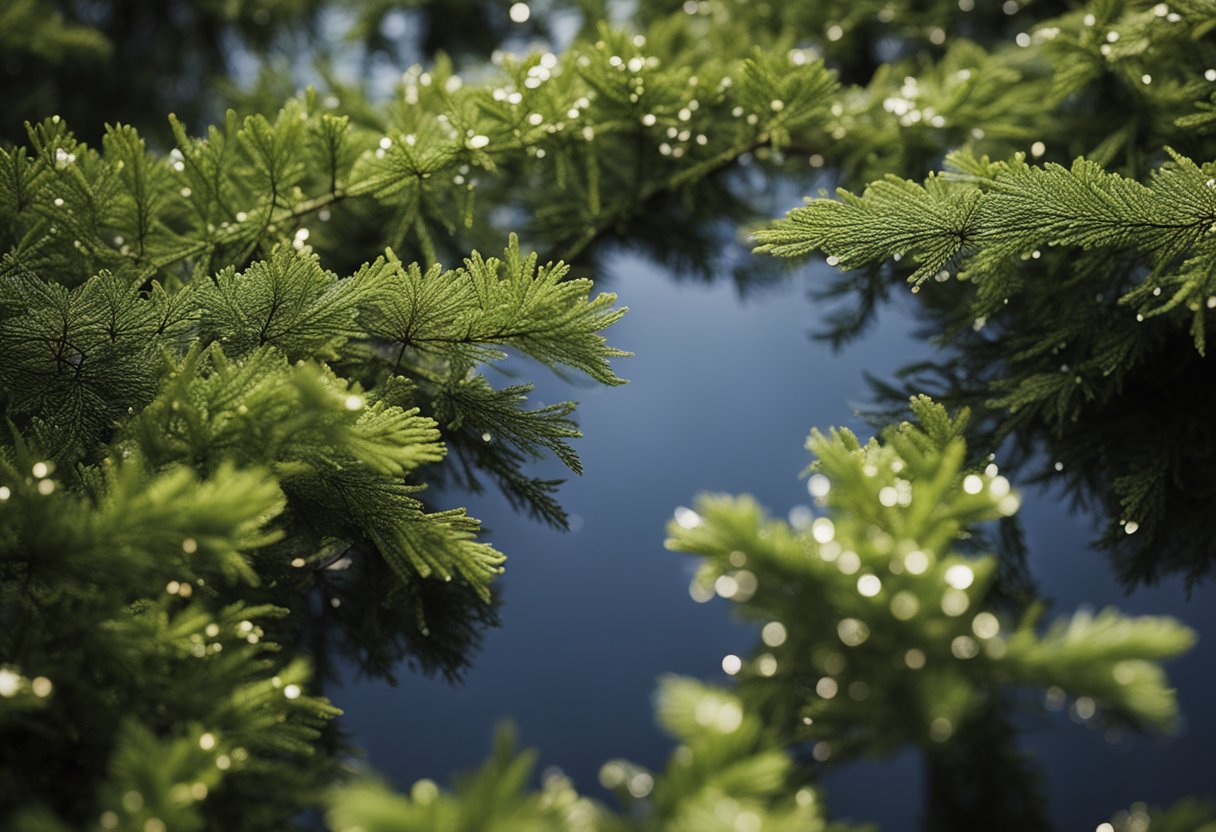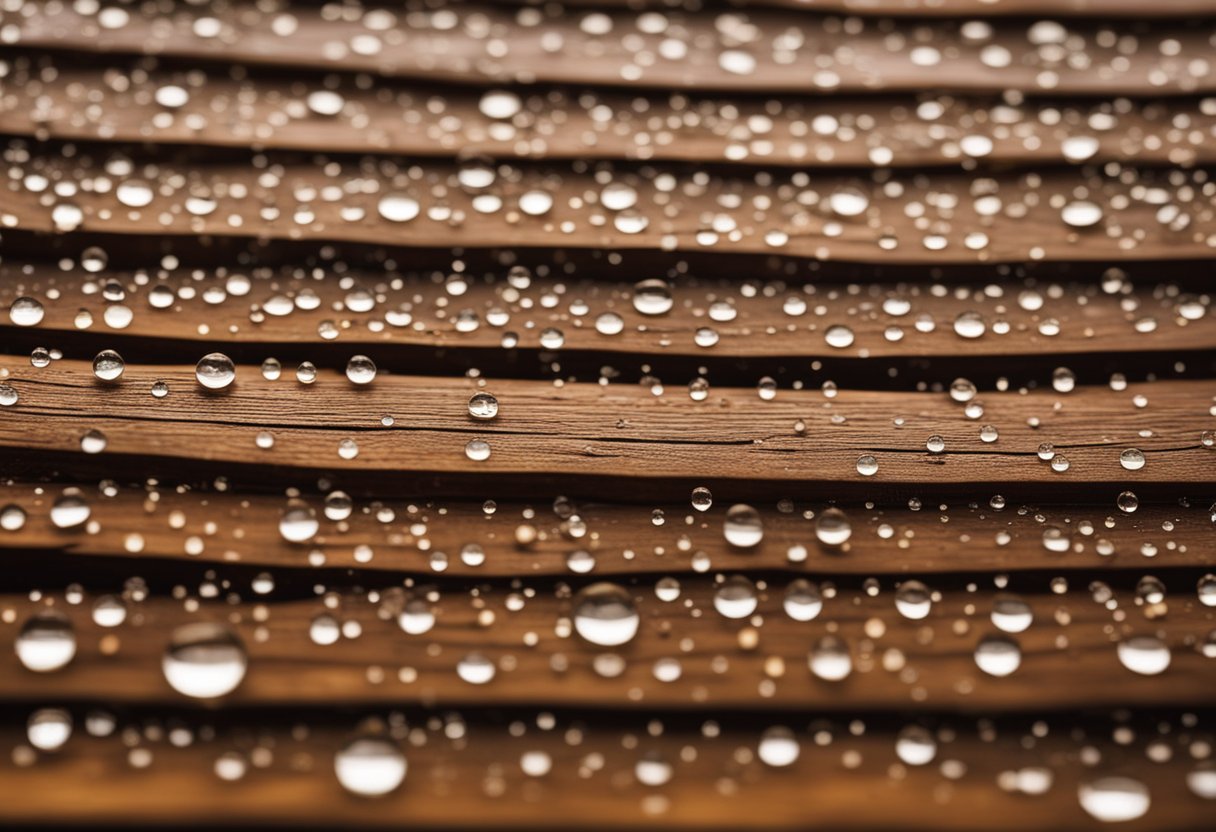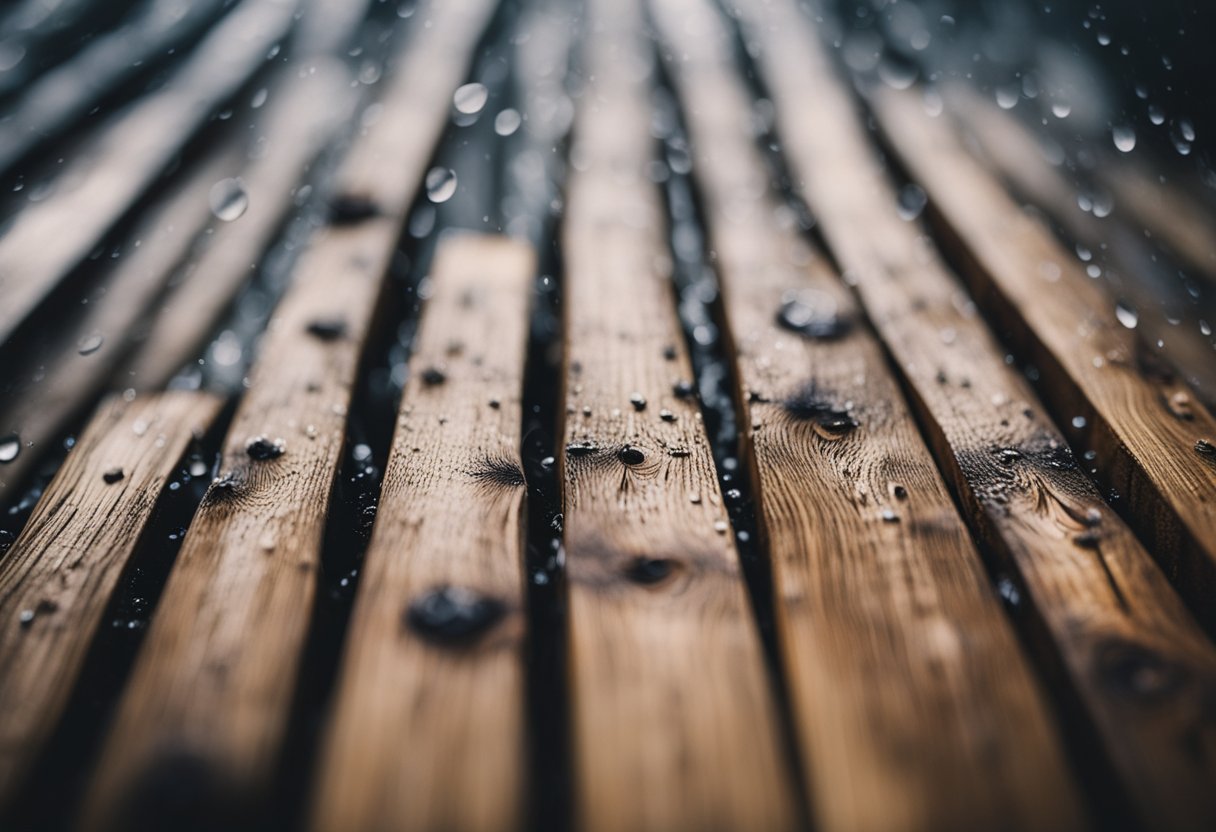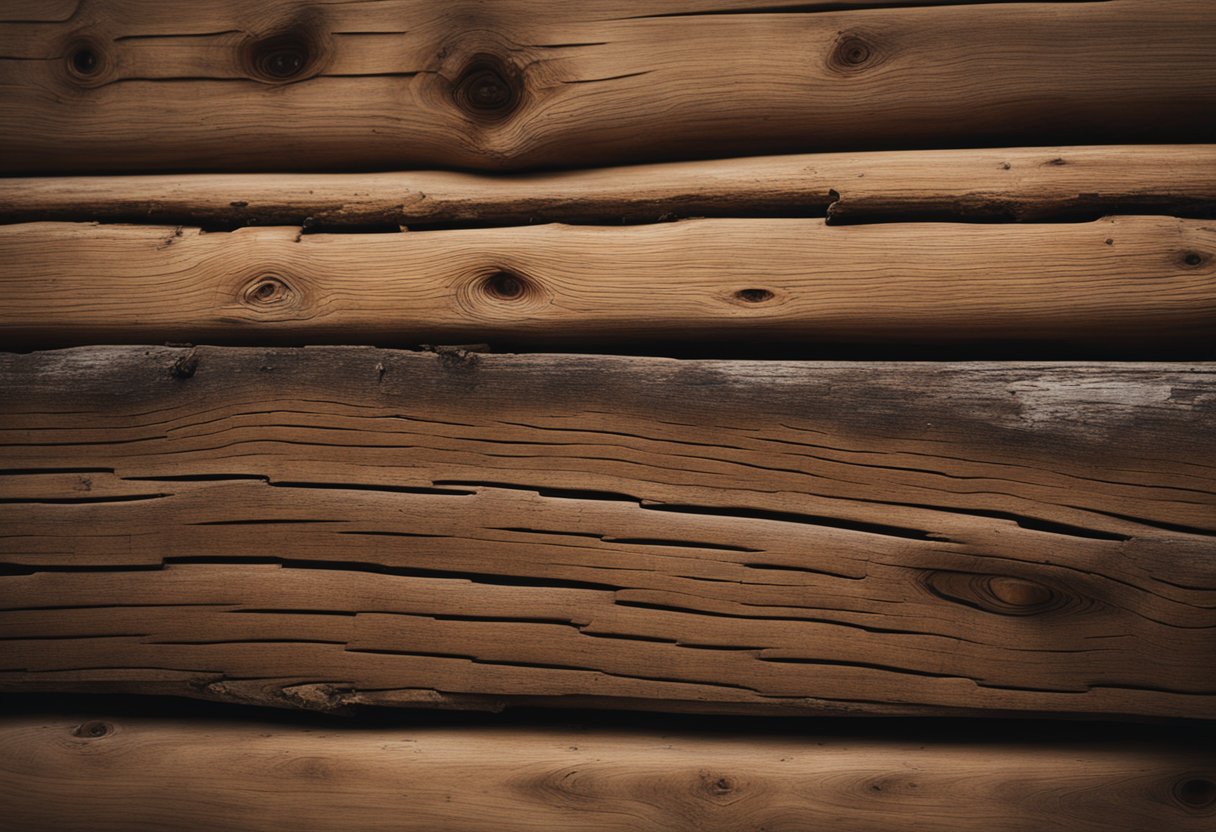Cedar wood is a popular choice for outdoor furniture, decking, and other structures due to its natural beauty and durability. However, one of the major concerns with cedar is whether it will rot when it gets wet. This is an important question to consider, especially if you live in an area with high humidity or frequent rainfall.
Cedar wood contains natural preservatives that make it resistant to decay and rot. However, when cedar wood gets wet, it can still be susceptible to rot if it is not properly maintained. In this article, I will explore the characteristics of cedar wood when wet, how cedar reacts to rot, and how to prevent and repair cedar rot. By the end of this article, you will have a better understanding of how cedar wood reacts to moisture and how to properly care for it to ensure its longevity.
Key Takeaways
- Cedar wood contains natural preservatives that make it resistant to decay and rot.
- When cedar wood gets wet, it can still be susceptible to rot if it is not properly maintained.
- Proper maintenance and care, including regular cleaning and sealing, can help prevent cedar rot.
Understanding Cedar Wood
https://www.youtube.com/watch?v=Cp8iVwIHbvY&embed=true
As a carpenter, I know that cedar wood is a popular choice for outdoor projects such as decks, fences, and furniture. Cedar is a type of softwood that is known for its natural resistance to decay and insects. It is a popular choice for outdoor projects because it is lightweight, easy to work with, and has a beautiful natural color.
Cedar wood is harvested from several different species of trees, but the most common type of cedar used for building is Western Red Cedar. This species is native to the Pacific Northwest region of North America and is known for its durability and resistance to rot.
When it comes to moisture, cedar wood can absorb water, but it is less prone to rot than other types of wood. This is because cedar wood contains natural oils that help to repel moisture and prevent rot. Additionally, cedar wood has a low density, which means that it is less likely to absorb water than hardwoods like oak or maple.
If you are using cedar wood for an outdoor project, it is important to choose high-quality timber that has been properly treated and dried. This will help to ensure that your project lasts for many years without rotting or deteriorating.
Characteristics of Cedar When Wet
As a carpenter, I have worked with cedar wood on numerous occasions, and I can confidently say that cedar wood is one of the best types of wood that can withstand moisture. When cedar wood gets wet, it does not rot as fast as other types of wood.
Cedar wood has a natural preservative called thujaplicin, which has antibacterial, antifungal, and antioxidant properties. This natural preservative helps to protect the cedar wood from decay, rot, and damage. As a result, cedar wood lasts long without decaying, rotting, and damage, even when it gets wet.
However, it is important to note that cedar wood is not completely water-resistant. When exposed to water for extended periods, cedar wood can warp, check, and expand. Therefore, it is important to keep cedar wood dry as much as possible.
One way to keep cedar wood dry is to ensure that it has a lower moisture content. Cedar wood with a lower moisture content is less susceptible to warping, checking, and expanding. The ideal moisture content for cedar wood is between 12% to 15%.
Another way to keep cedar wood dry is to store it in a dry and well-ventilated area. This will help to prevent moisture buildup, which can cause the wood to warp and check.
In summary, cedar wood is a great option for outdoor projects because of its natural preservative and ability to withstand moisture. However, it is important to keep cedar wood dry as much as possible to prevent warping, checking, and expanding.
How Cedar Reacts to Rot
https://www.youtube.com/watch?v=XEpebT8Z980&embed=true
As a professional woodworker, I have seen cedar wood used in various applications, from fencing to decking. One of the most common questions I get from clients is whether cedar wood rots when exposed to moisture. The answer is yes, cedar wood can rot when wet, but it is more resistant to rot than other types of wood.
Rot is a natural process that occurs when wood is exposed to moisture, fungi, and other microorganisms. There are different types of rot, including brown rot, white rot, and dry rot. Brown rot is the most common type of rot that affects cedar wood. It breaks down the cellulose in the wood, leaving behind lignin, which gives the wood a brownish color. White rot, on the other hand, breaks down both cellulose and lignin, leaving the wood white and spongy. Dry rot is a type of decay that occurs when the wood is exposed to high humidity and lacks proper ventilation.
Cedar wood is more resistant to rot than other types of wood because it contains natural oils that repel moisture and insects. These oils also make cedar wood resistant to fungi, mold, and mildew. However, cedar wood can still rot when exposed to prolonged moisture, especially if it is not properly sealed or treated. When cedar wood gets wet, it is important to take immediate action to dry and restore it to its original condition.
To prevent cedar wood from rotting, it is important to keep it dry and well-ventilated. This means storing it in a dry place and avoiding direct contact with the ground. It is also important to seal or treat cedar wood to protect it from moisture and decay. There are various treatments available for cedar wood, including oil-based stains, water-based stains, and clear sealers. These treatments not only protect cedar wood from rot, but also enhance its natural beauty.
In conclusion, cedar wood can rot when exposed to moisture, but it is more resistant to rot than other types of wood. To prevent cedar wood from rotting, it is important to keep it dry and well-ventilated, and to seal or treat it to protect it from moisture and decay. With proper care, cedar wood can last for many years and maintain its natural beauty.
Preventing Cedar Rot
As a carpenter, I know that preventing cedar rot is important for the longevity of any cedar wood project. Here are some tips to help you prevent cedar rot:
1. Clean the Wood Regularly
Cleaning cedar wood regularly is an effective way to prevent rot. Use a fan to dry the wood after cleaning. This will help to prevent moisture from accumulating on the surface of the wood.
2. Apply a Wood Preservative
Applying a wood preservative is an effective way to prevent cedar rot. A wood preservative will protect the wood from moisture and insects. You can use a fungicide to treat the wood before applying the preservative for maximum protection.
3. Seal the Wood
Sealing the wood is another effective way to prevent cedar rot. A sealant will protect the wood from moisture and insects. You can use a water repellent to treat the wood before applying the sealant for maximum protection.
4. Stain the Wood
Staining the wood is an effective way to prevent cedar rot. A stain will protect the wood from moisture and insects. You can use a linseed oil-based stain to treat the wood before applying the sealant for maximum protection.
By following these tips, you can prevent cedar rot and ensure that your cedar wood projects last for years to come.
Cedar in Different Environments
https://www.youtube.com/watch?v=2P9Br1DoL_A&embed=true
As a woodworker, I have used cedar wood for various applications such as exterior siding, decking, fencing, and outdoor furniture. One of the most common questions I get asked is whether cedar wood rots when wet. The answer is not straightforward, as it depends on various factors such as the environment, moisture levels, and fungal growth.
Exterior
Cedar wood is a popular choice for exterior applications due to its natural resistance to decay and insects. However, it is not entirely immune to moisture damage. When exposed to high levels of moisture, cedar wood can develop rot-causing organisms that deteriorate the wood fibers. Proper installation, sealing, and maintenance can help prevent moisture damage and prolong the life of cedar wood.
Decking
Cedar decking is a popular choice for outdoor spaces due to its natural beauty and durability. However, it is essential to maintain cedar decking properly to prevent moisture damage. Regular cleaning, sealing, and staining can help protect cedar decking from moisture, sun damage, and fungal growth.
Outdoor Furniture
Cedar wood is a popular choice for outdoor furniture due to its natural resistance to decay and insects. However, outdoor furniture is exposed to various elements such as rain, sun, and humidity, which can cause moisture damage. Proper maintenance such as regular cleaning, sealing, and staining can help prolong the life of cedar outdoor furniture.
Bathroom and Kitchen
Cedar wood is not recommended for use in bathrooms and kitchens due to its natural porosity and susceptibility to moisture damage. Exposure to high levels of moisture can cause cedar wood to warp, rot, and develop mold and mildew. It is best to use moisture-resistant materials such as tile, stone, or vinyl in these areas.
Roofing and Walls
Cedar wood is a popular choice for roofing and walls due to its natural beauty and durability. However, it is essential to maintain cedar roofing and walls properly to prevent moisture damage. Regular cleaning, sealing, and staining can help protect cedar wood from moisture, sun damage, and fungal growth.
Basement and Floors
Cedar wood is not recommended for use in basements and floors due to its natural porosity and susceptibility to moisture damage. Exposure to high levels of moisture can cause cedar wood to warp, rot, and develop mold and mildew. It is best to use moisture-resistant materials such as concrete, tile, or vinyl in these areas.
Cladding and Windows
Cedar wood is a popular choice for cladding and windows due to its natural beauty and durability. However, it is essential to maintain cedar cladding and windows properly to prevent moisture damage. Regular cleaning, sealing, and staining can help protect cedar wood from moisture, sun damage, and fungal growth.
In conclusion, cedar wood is a beautiful and durable material that can withstand various environments. However, proper installation, sealing, and maintenance are crucial to prevent moisture damage and prolong the life of cedar wood.
Repairing and Maintaining Cedar
https://www.youtube.com/watch?v=Lkb1c-1AaZA&embed=true
As a natural material, cedar wood can be susceptible to damage and decay over time. However, with proper maintenance and repair, you can extend the life of your cedar wood and keep it looking beautiful for years to come.
One common issue with cedar wood is cracking, which can occur due to changes in temperature and moisture levels. To repair cracks in cedar, I recommend using a high-quality wood filler or epoxy resin. Simply apply the filler or resin to the crack, smooth it out with a putty knife, and let it dry according to the manufacturer’s instructions. Once the filler or resin is dry, sand it down until it is flush with the surrounding wood.
Regular maintenance is also important for keeping cedar wood in good condition. This includes cleaning the wood regularly to remove dirt and debris, as well as applying a protective stain or sealant to prevent moisture damage. When choosing a stain or sealant, look for products that are specifically designed for use on cedar wood and follow the manufacturer’s guidelines for best results.
In addition to regular maintenance, there are a few other steps you can take to protect your cedar wood from damage. For example, you can use caulk to seal any gaps or cracks around windows, doors, and other openings to prevent moisture from seeping in. You can also install gutters and downspouts to direct water away from your cedar wood and prevent mold and fungus growth.
If your cedar wood has already sustained damage, such as dings or splitting, it may be best to hire a professional to make repairs. A professional can assess the damage and recommend the best course of action, whether that’s sanding and refinishing the wood or replacing damaged sections.
Overall, cedar wood is a durable and beautiful material that can last for many years with proper care and maintenance. By following these guidelines and taking steps to protect your cedar wood from moisture and other types of damage, you can keep it looking great for years to come.
Comparing Cedar with Other Woods
https://www.youtube.com/watch?v=BlIcdTeBo8Q&embed=true
As a building material, cedar wood is often compared to other types of wood, such as fir, pine, redwood, and cypress. When it comes to water resistance, cedar wood is not completely waterproof, but it is more resistant to rot and decay than many other types of wood.
Compared to new pine wood, cedar has a lower tendency to hold water, which makes it less susceptible to rot and decay. Sanding or sealing pine wood can help improve its water resistance, but it still won’t be as water-resistant as cedar wood.
When compared to ground contact wood, which is wood that is in contact with the soil, cedar wood is more resistant to rot and insect damage. Ground contact wood is often treated with preservatives to improve its durability, but even treated wood can rot or decay over time.
Cedar wood is also known for its natural color and resistance to cracking. Unlike other types of wood, cedar wood doesn’t require as much maintenance to keep its natural color. It’s also less likely to crack or split due to changes in temperature or humidity.
While cedar wood is not completely waterproof, it is more water-resistant than many other types of wood, such as fir or pine. It’s also more resistant to rot and decay than many other types of wood, such as cypress or teak.
Overall, cedar wood is a popular building material due to its natural resistance to rot and decay, its natural color, and its resistance to cracking. While it’s not completely waterproof, it’s more water-resistant than many other types of wood and can be a good choice for outdoor use, such as for decking, siding, or countertops.
Frequently Asked Questions
How long does it take for cedar to rot?
Cedar is naturally rot-resistant due to the presence of natural oils and resins. However, it is not completely immune to rot and decay. The lifespan of cedar wood depends on various factors, including the level of moisture exposure, the presence of fungi, and the quality of the wood. In general, untreated cedar can last for up to 20 years, while treated cedar can last for up to 40 years or more.
What happens when cedar gets wet?
Cedar wood is naturally resistant to moisture and decay. When cedar gets wet, it does not absorb moisture easily, which means that it is less likely to rot or decay. However, prolonged exposure to moisture can cause the wood to swell and warp, which can lead to structural damage over time. To prevent moisture damage, it is important to keep cedar wood dry and well-ventilated.
How to treat cedar wood for outdoor use?
Cedar wood is an excellent choice for outdoor use due to its natural resistance to decay and pests. However, treating cedar wood can enhance its beauty, durability, and lifespan. The best way to treat cedar wood for outdoor use is to apply a protective finish, such as a clear sealer or a stain. This will help to prevent moisture damage and protect the wood from UV rays.
Can you stain cedar?
Yes, you can stain cedar wood. Staining cedar can help to enhance its natural beauty and protect it from moisture damage. However, it is important to choose the right type of stain for cedar wood. Oil-based stains are the best choice for cedar, as they penetrate the wood fibers and provide long-lasting protection. Water-based stains are not recommended for cedar, as they can cause the wood to swell and warp.
How long will cedar last outdoors?
Cedar wood is naturally resistant to decay and pests, which makes it an excellent choice for outdoor use. The lifespan of cedar wood depends on various factors, including the level of moisture exposure, the presence of fungi, and the quality of the wood. In general, untreated cedar can last for up to 20 years, while treated cedar can last for up to 40 years or more.
Can you paint cedar?
Yes, you can paint cedar wood. However, painting cedar is not recommended, as it can cause the wood to lose its natural beauty and durability. Paint can also trap moisture inside the wood, which can lead to rot and decay over time. If you must paint cedar, it is important to choose a high-quality paint that is specifically designed for use on wood.

Hi, I’m Sal Muller of Tooltrip.com. My DIY experience led me to understand essential power tools for home projects. Tooltrip.com guides enthusiasts and professionals in choosing right tools for any job. I provide concise top tool reviews for easier, efficient DIY.





